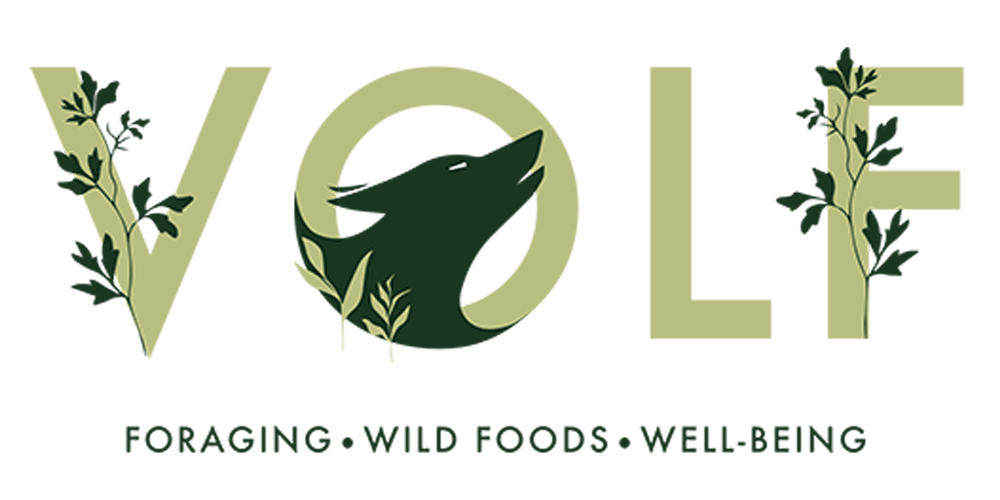Black Locust & Bay Leaf Lemonade
Recipe by Luke Jefford
We’ve been waiting patiently for the arrival of Black Locust. We wanted to try out a low sugar, naturally fermented soda. And, it’s absolutely beautiful! The Jasmine’esque floral blooms work so well in fermentation. The same process could be used for any edible floral flower.
I was first introduced to Black Locust by John Rensen, from Forage London. During a telephone conversation years ago, John told me I needed to keep an eye out for it, to which I did, diligently. If John was excited about it, I needed to be too! I did manage to find a tree hanging over a garden (where I lived at the time), and nibbled away at its sweet pea flavoured flowers. I would have knocked on this persons door for more, if I’d have had the confidence. But, I can’t imagine they’d have welcomed my gluttony. I’ve patiently been waiting for another opportunity to arise, with peace of mind. Over the years we’ve seen the tree’s they’ve been teasingly too high to forage from.
Luckily, this year we found a wonderful ‘guilt free’ spot away from private property and the tree’s were small enough to reach their flowers. The experimentation began. Nikki & I opted to make a fermented soda using only honey, whey, water & lemon. We also added a few of our foraged bay leaves because we imagined the flavours to compliment eachother, and they did, massively. We kept the sugar down for something to mix with spirits in this hot weather. But, you could double the honey, to make something sweeter as a standalone drink. We also reserved some flowers to simply sprinkle on salads. They’re divine!
We made our own whey, which is detailed below. Using a natural yoghurt full of live cultures (Bifidobacterium, Lactobacillus Acidophilus, Streptococcus Thermophilus), we were able to skip using raw honey. A) because it’s bloody expensive. And, B) It’s not necessary for the fermentation and carbonisation.
We really hope you get to try the flowers, as they worth the obsessive compulsive search. You might even possess are stronger nature than I, and go and knock on that door ;)
Ingredients
2500g Unchlorinated Water
130g Whey
200g Good Quality Honey (or double this)
170g Black Locust Flowers (no stems attached)
12 Dried Bay Leaf
1/2 Lemon Sliced
Method
It is really important to make sure all of your utensils are sterilised before starting.
Tip
You can make your own whey. Simply buy a natural yogurt (make sure it has all of those lovely microbial friends listed above). Pop it into a muslin cloth over a sieve, over a bowl. And watch as the liquid (whey) drips out of the yogurt. This contains all of those helpful microbes which are going to do all of the hard work with fermentation. You could also try using sauerkraut juice if you’re vegan.
Step 1
Mix all of the ingredients together, there’s no need for heating here. Making sure the honey has dissolved into the water using a whisk or rubber spatula.
Step 2
Pop in to your fermentation vessel of choice. Glass is best for us. Don’t use pesky plastic.
Step 3
Pop a cartouche on top. This is a fancy word for a circle piece of parchment paper. You can see how to make one here. And press down on the mix so it stays submerged.
Step 4
Cover with a fine muslin or breathable fabric of choice. As Long as its sterile and lets in oxygen, it doesn’t matter too much. It’s just for keeping bugs and unwanted debris out.
Step 5
Every day, remove your fabric and cartouche, give it a swirl with a rubber spatula or other hygienic weapon of choice. Generally we don’t use anything metal or wooden for this process. And, pop the parchment and muslin back on.
Step 6
After around 4-5 days you should see the signs of bubbles starting to appear under the flowers. This is the time to take off your materials and bottle up. Let the carbonisation begin. Strain your mixture through a sieve. Or if you’re super anal like us, through a cheesecloth. Bottle into (hopefully recycled) plastic screw top bottles. Let it carbonate for 24 hours at room temperature and then keep in the fridge to slow down those bubbles. Keep an eye on your bottle, you may need to let out some gas here and there.
Step 7



